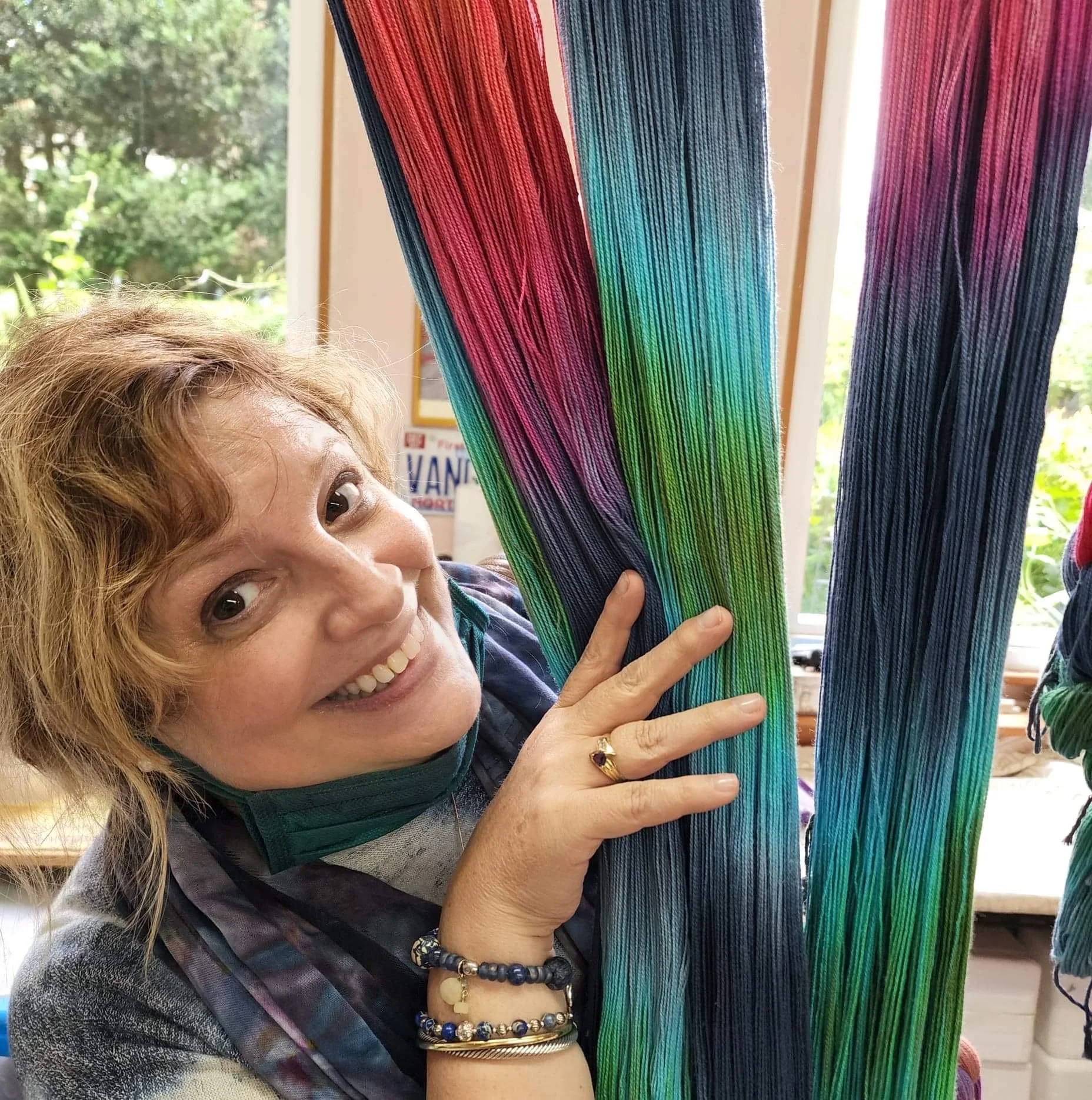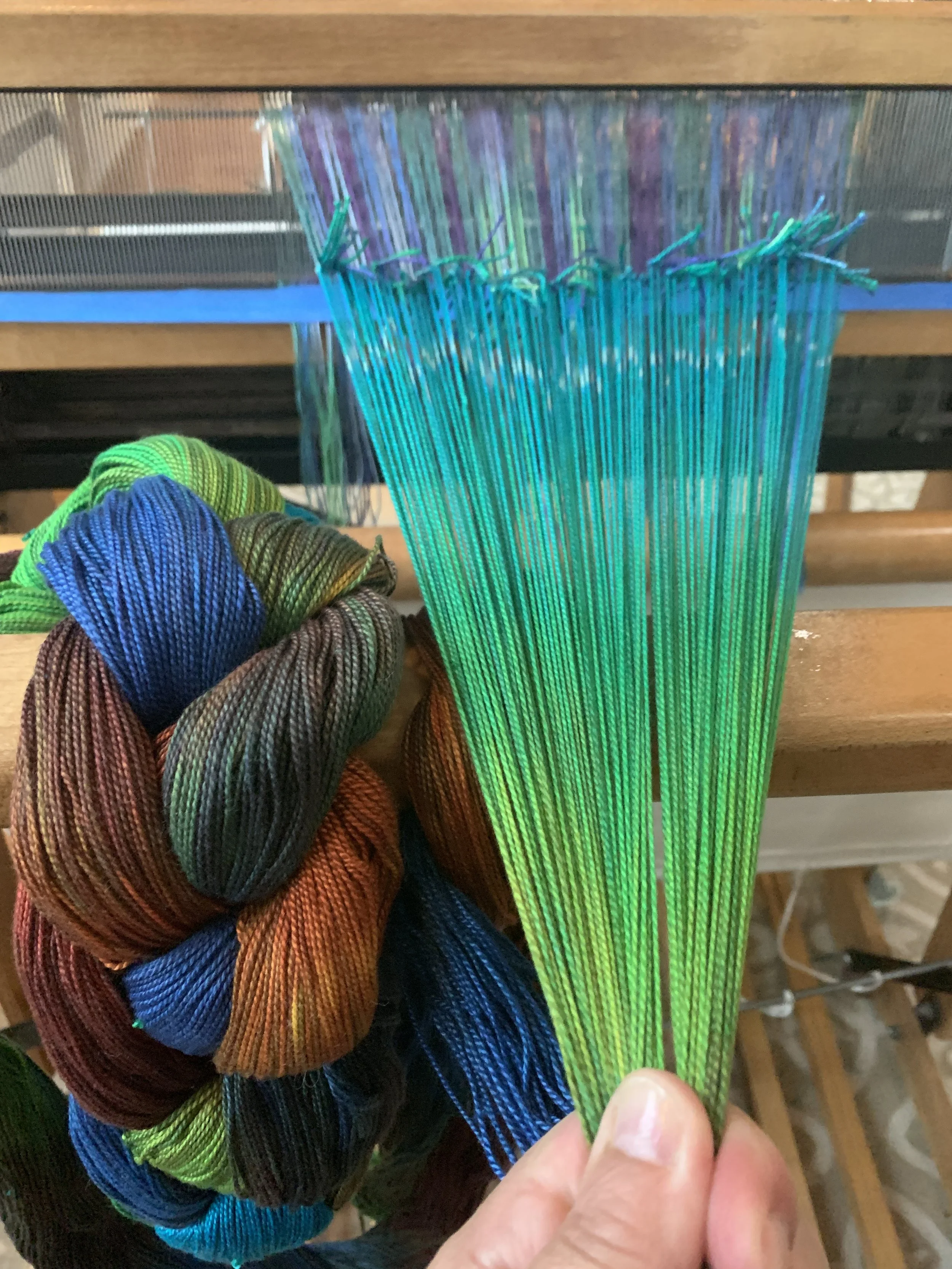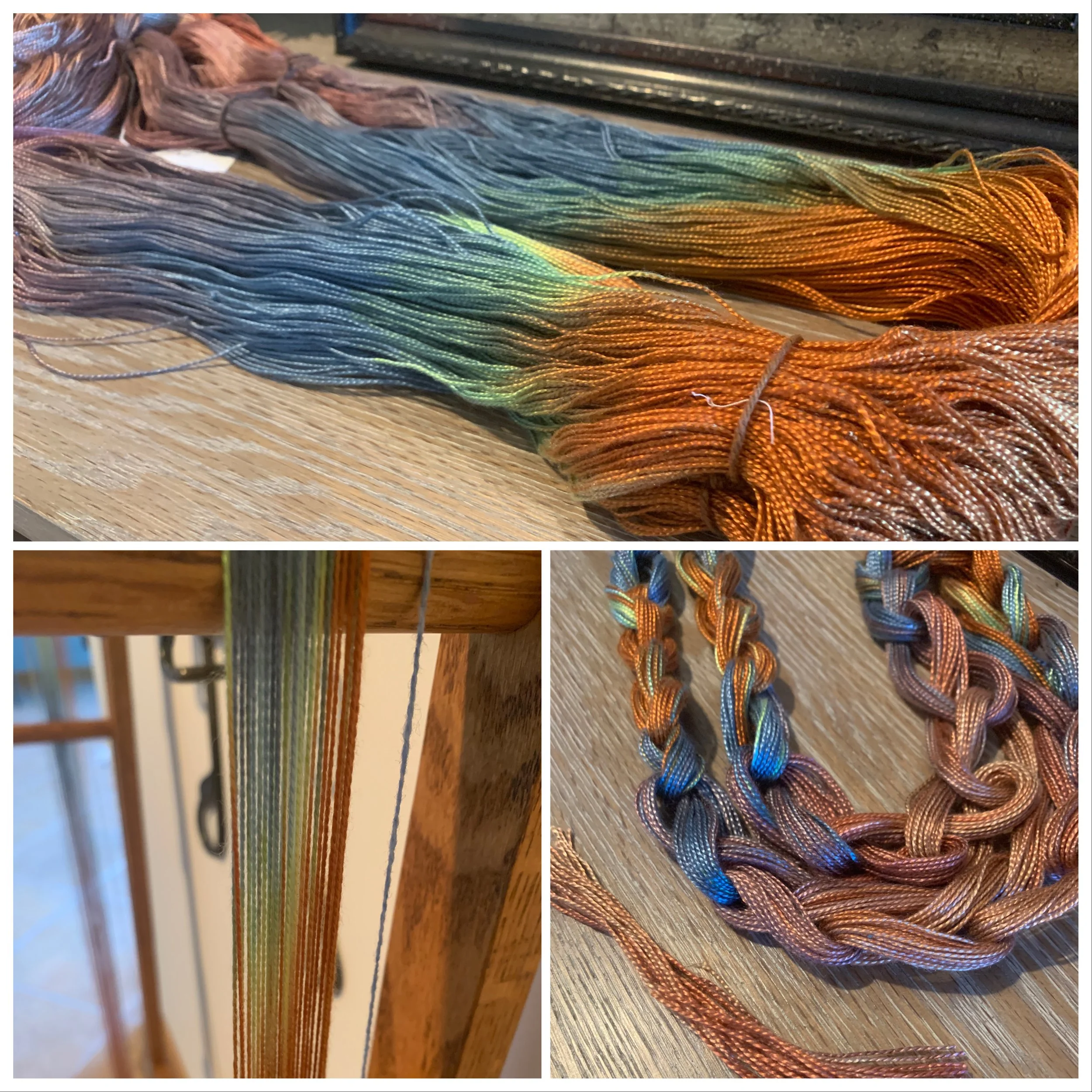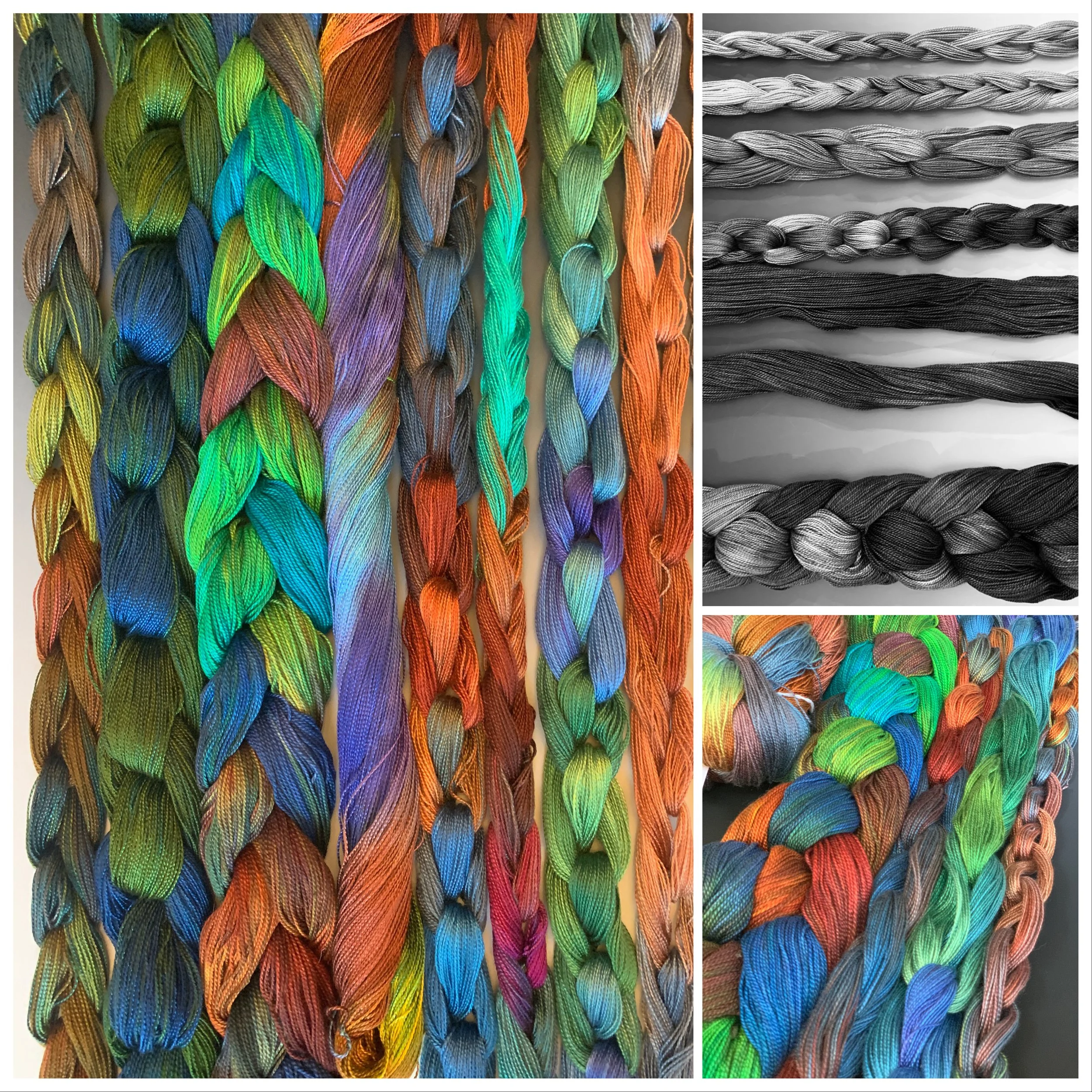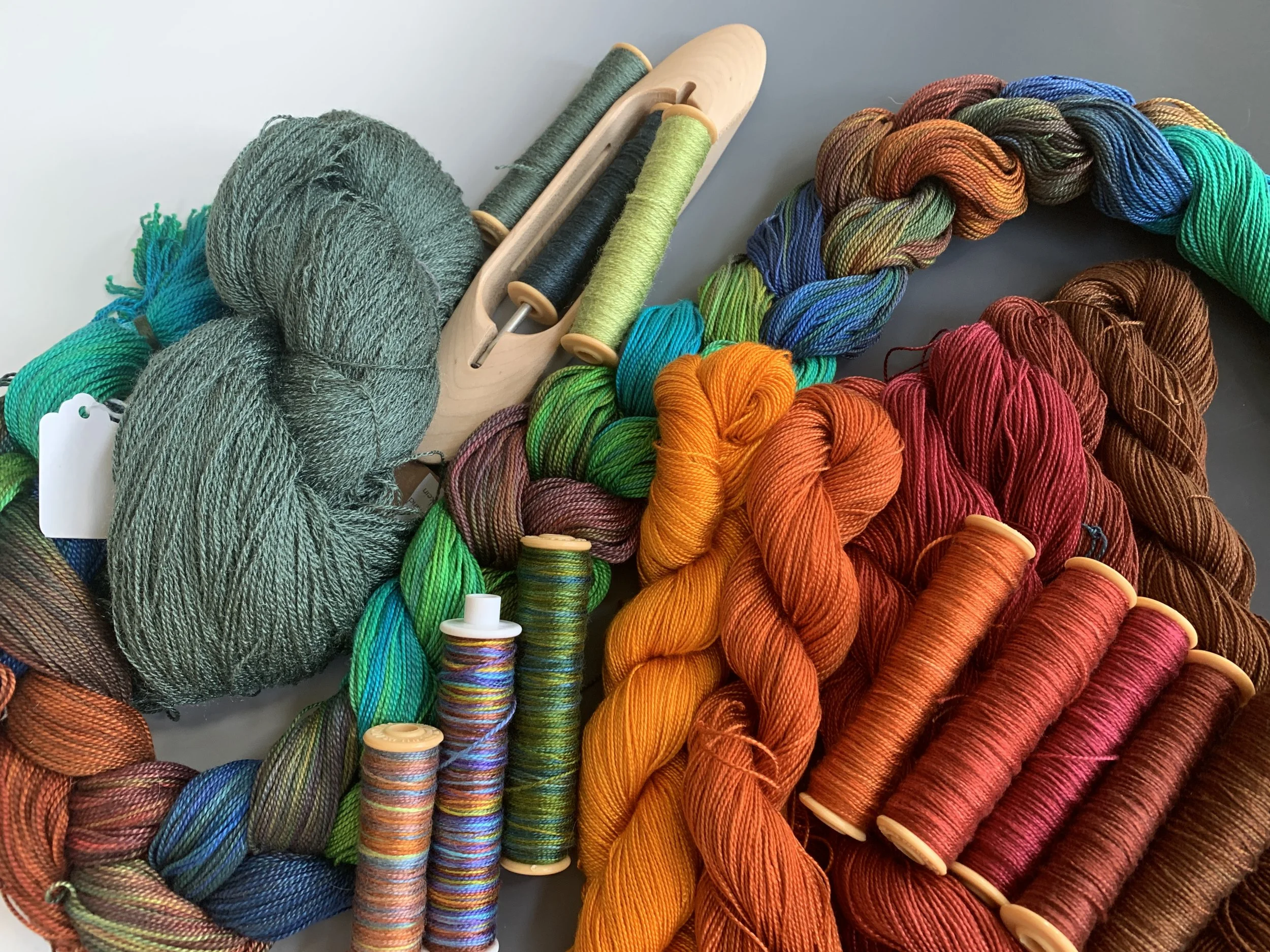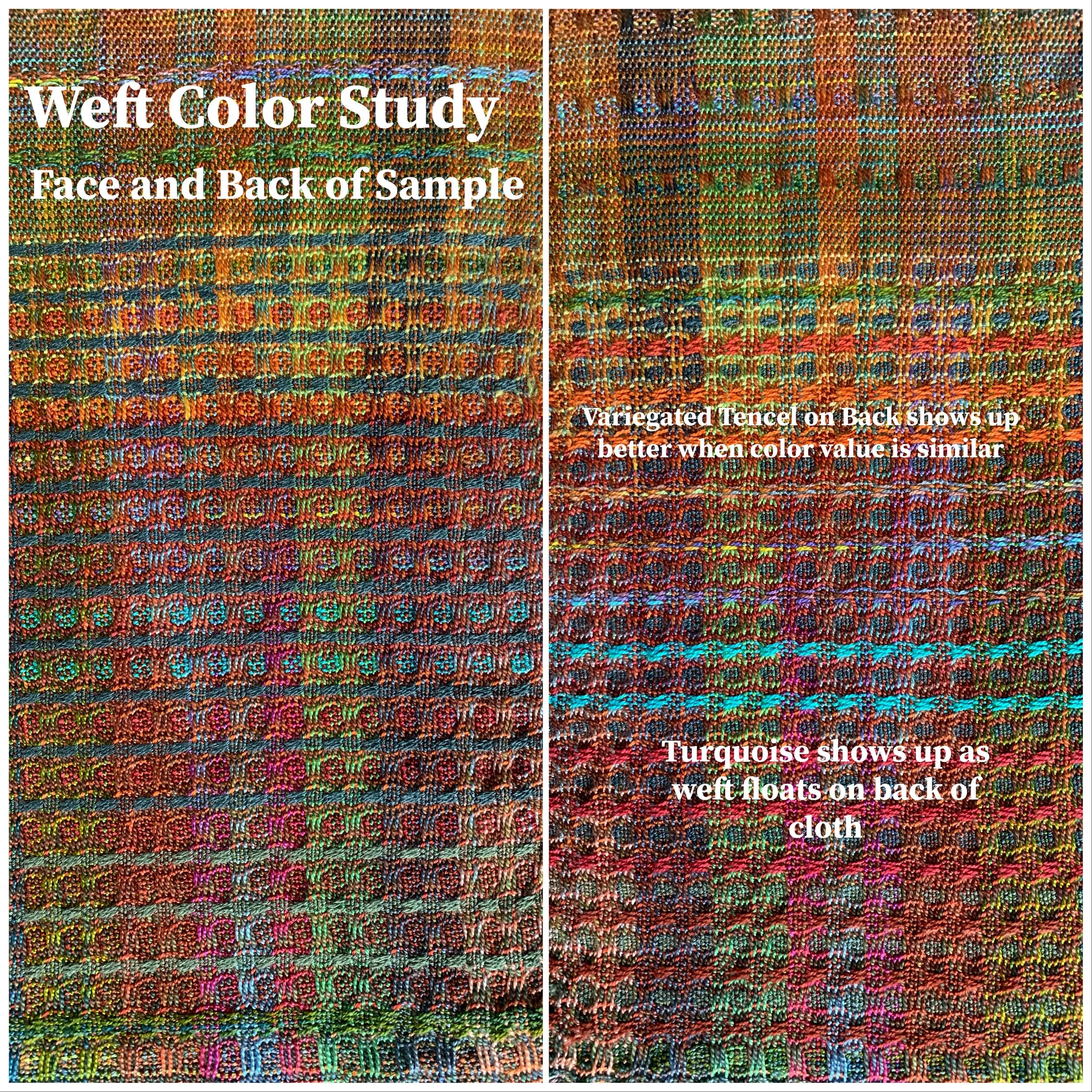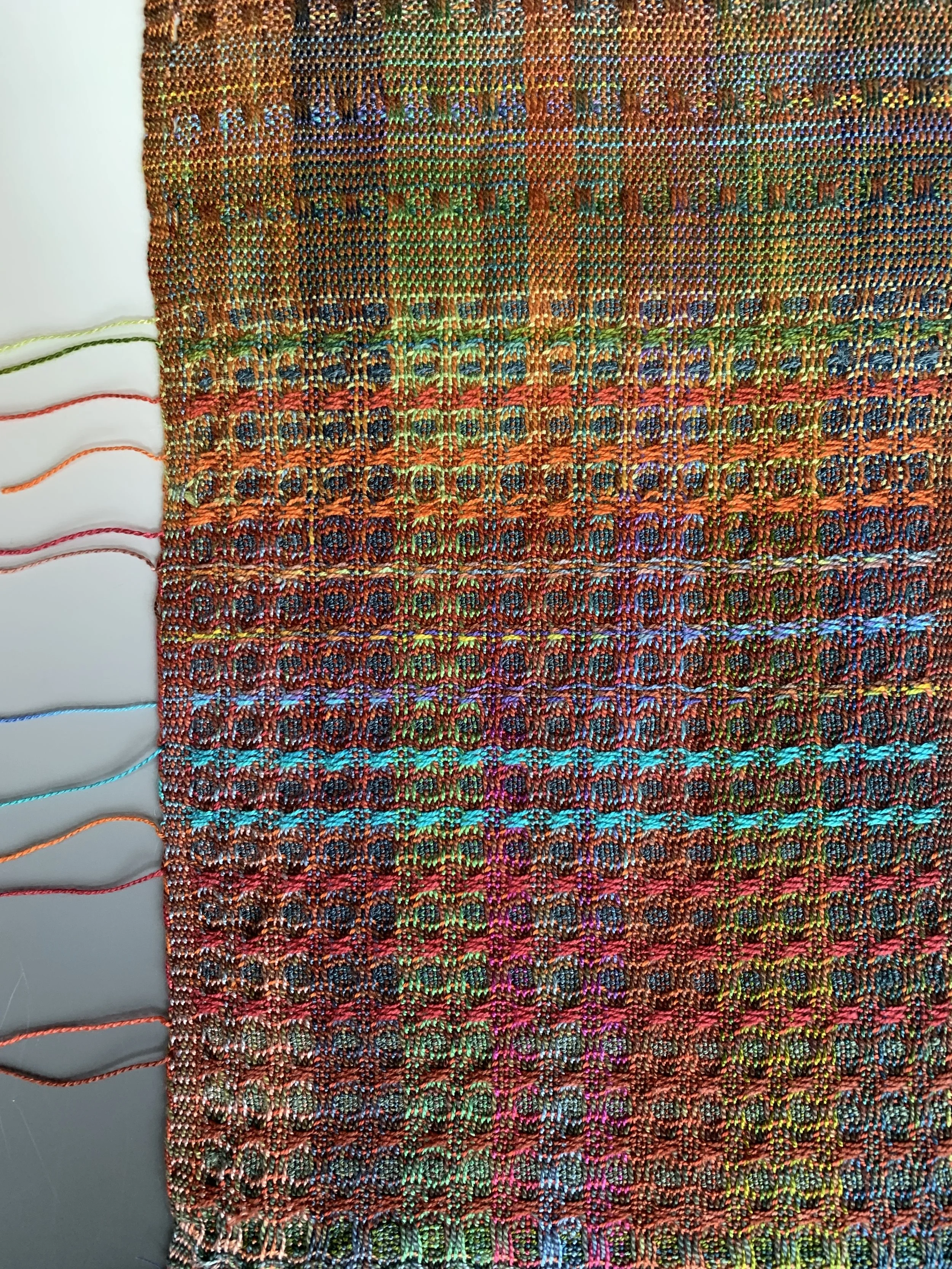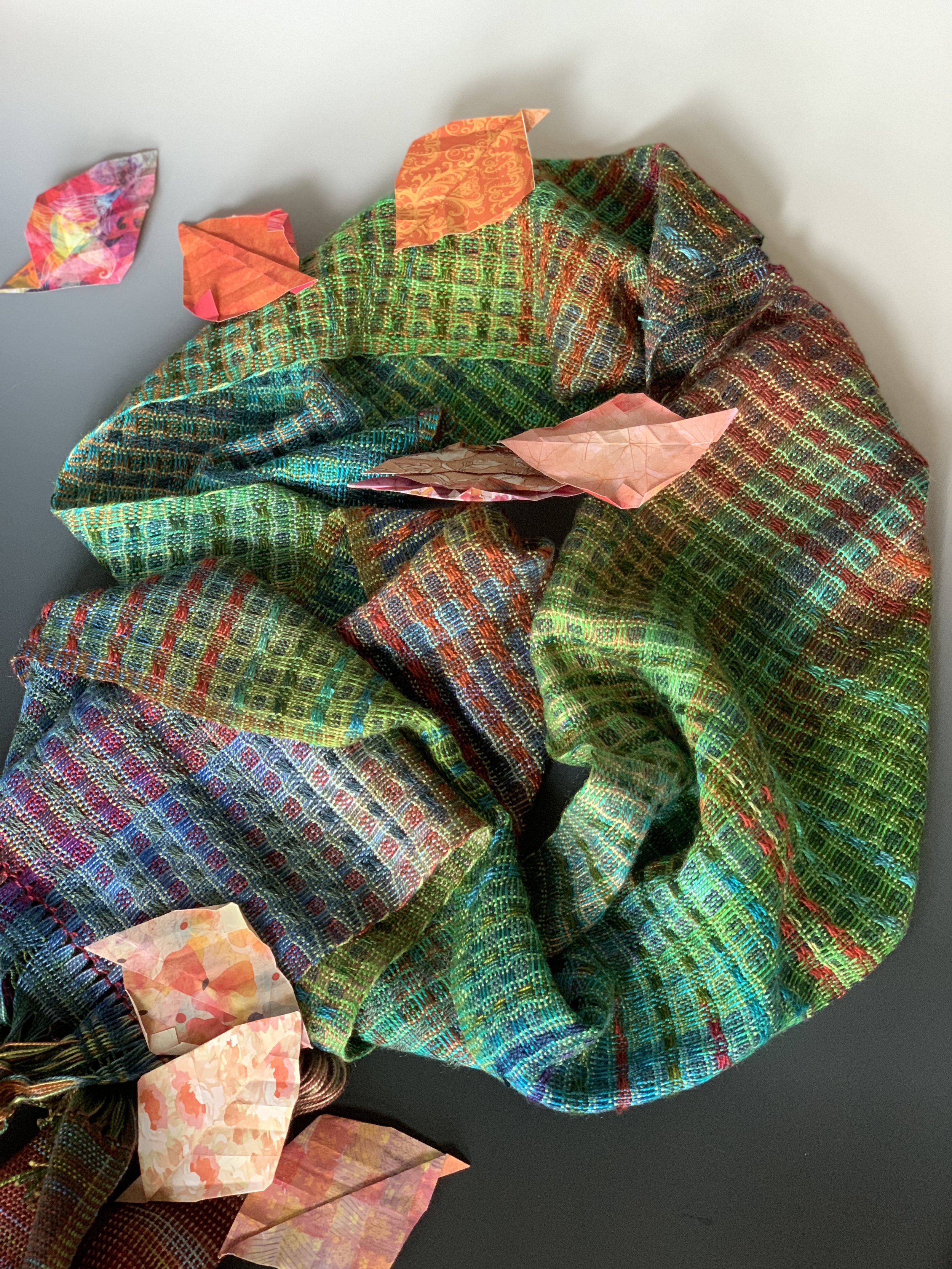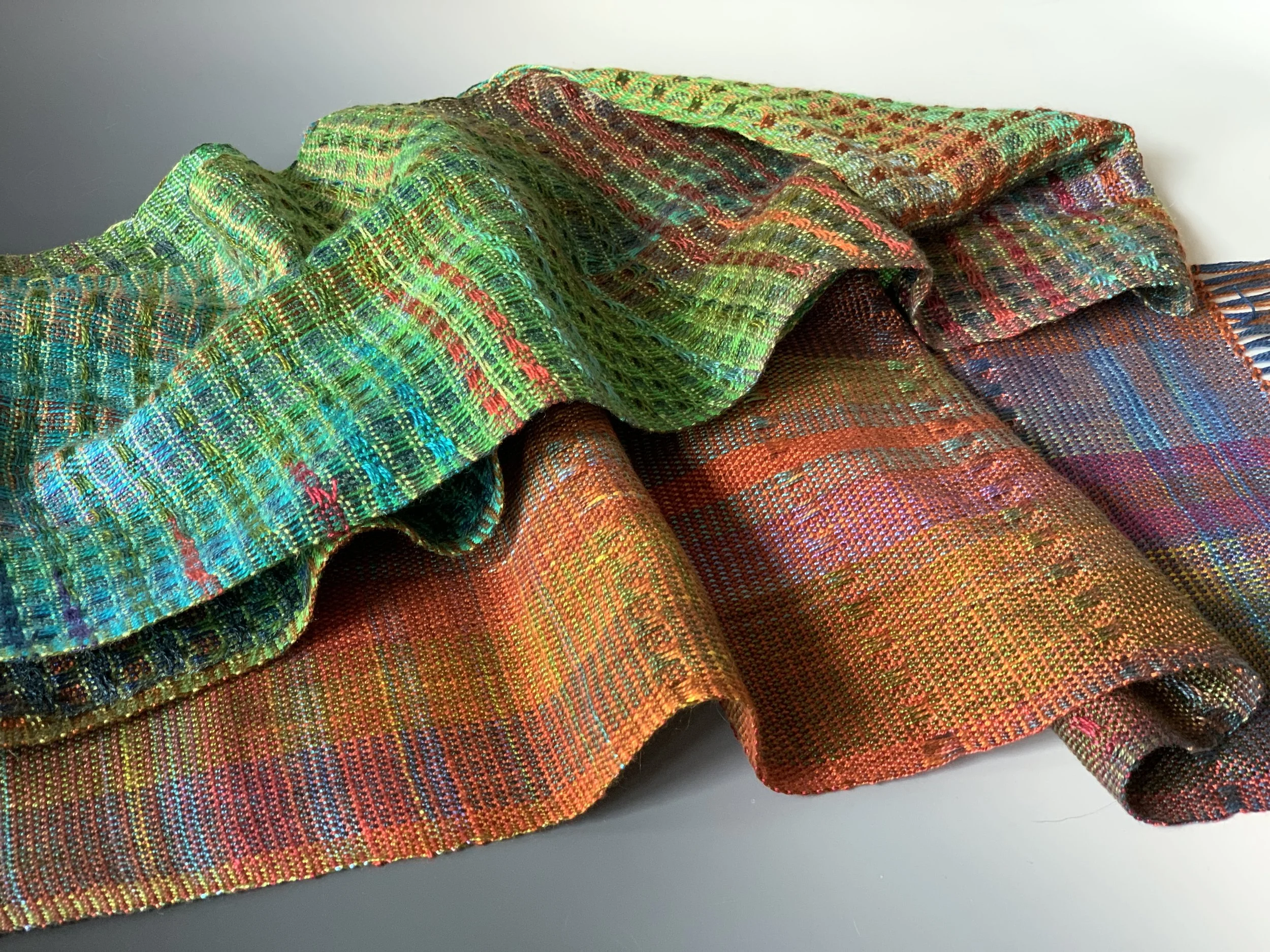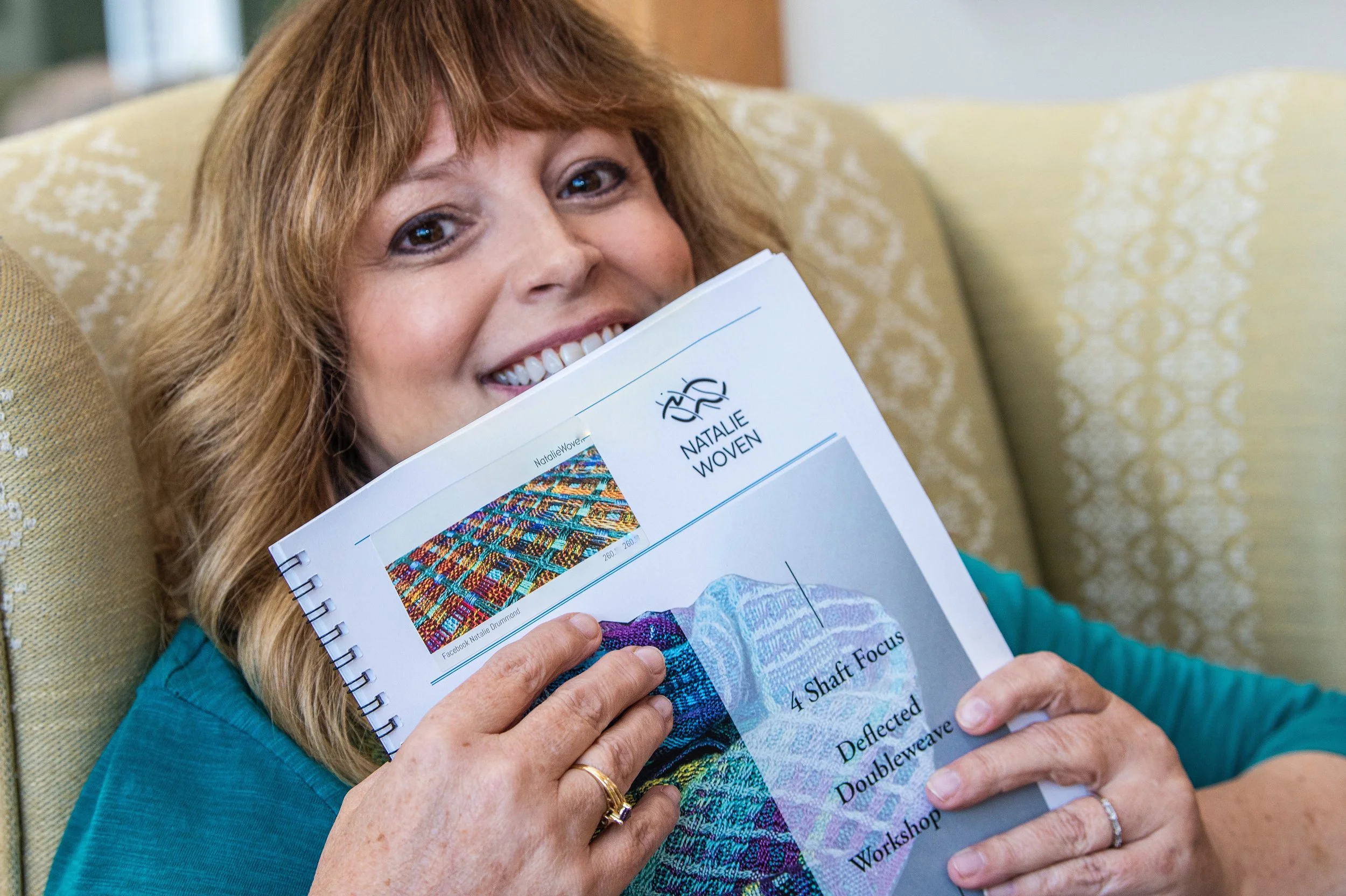4 Shaft Deflected Doubleweave and Color Pooling Experiments - Variations
Most know I love weaving with color! A good study of yarn values is critical for color work and I strive to have areas of light, medium, and dark values in my work. Many use color filters to assess value in yarn. So far, my iPhone and viewing the yarns in black/white has worked for me! I once took a mini-photography workshop with John Gevers and said “the best camera is the one you have with you on hand, so learn to use it well.” I had the opportunity to attend Convergence in Knoxville and visit the Blazing Shuttle Studio on the Craftsman Tour.
Summer’s Joy Ringspun Cotton
Blazing Shuttles Studio Tour
Dyed by Kathrin Weber
Of course I had to purchase some yarn and one of them that caught my fancy was Deep Sea Jewels 5/2 Cotton. I had been thinking about exploring more Color and Weave areas within my next Deflected Doubleweave and decided to make this a featured yarn set up in a 1:1 ratio across the warp. It’s easiest if I do my designing in the reed and tie on to a pre-existing warp where I have preserved my threading.
The other yarns will come from my stash of remnant warps. My next goal is to come up with some other Tencel warps with light, medium and dark values that will complement the featured Deep Sea Jewels Cotton. The 5/2 Tencel called New Town Road is a choice, but it’s a skein and I spend some time color pooling the skein from my swift directly to my warping board. Circumference is 56” so I multiply that by the the number of times that gets me closest to a 4.5 yard warp. I ended up color pooling two other skeins. The color pooling produces a feathered alignment of yarns in the warp and there was minimal waste. There is a great article about color pooling: https://www.weavezine.com/content/painted-skein-warps-bonus-content.html
I lay out multiple warps or warplets laying in colors and making decisions one warp at a time. I’m going for lighter values on one side of the warp and darker value yarns on the other. I take black and white photos along the way and by the end I have arrived at nine additional warps that will be threaded in a 1:1 ratio with Deep Sea Jewels, the largest warp in the photo. Three out of nine are color-pooled skeins. The photo on the left represents the closest capture of warps used in the final warp. The key is to have it pleasing to my eye.
If beaming the resulting warp wasn’t my favorite thing to do, planning projects with color probably would be! I love to take beaming photos and I find them to be helpful to me to look back on to further plan my weft colors. After beaming, I’m pretty pleased with how the colors are aligning with the exception of a deep rust next to a green in the center of the warp. I decide to replace 12 ends with the dominant warp of Deep Sea Dive Tencel for color reasons…magenta and aqua worked well with the red rust and green in the warps beside it. Every section will be exciting to weave! I shift some of this warplet a few inches by cutting off at the back and rebeaming. If it sounds like a lot of work, …it is, but it can be worth it. I know it will give me a color challenge for selecting my wefts, but also lots of opportunities.
Sampling is also a key component of my work! Since I have an equal amount of cotton and tencel in my warp, I have decided to opt with a tencel and tussah silk for my weft giving what I hope will be good drape. The sett is 20ppi for my warp. I’m going to sample several solid tencels as my weft from a fall gradient yarn package I ordered from Shiny Dime Fibers. In addition, I have three variegated yarns that I color pooled for the warp so I’ll wind a couple of bobbins and sample these as well. The tussah silk I’ve selected are Stormy Teal, Grantius Green, and Limelight for a pop of color dyed by Jane Stafford. Where I use these colors in the draft becomes important. Using green yarns in a warm and cool color draft can often help bring your warp together because the color is considered the middle of the light spectrum. Olives help to mute or darken the overall warp colors and lemongrass or in this case limelight helped to brighten the overall warp colors. Notice how each of the warp colors are brightened in the last four repeats of the treadling. If you look below the limelight, the colors of the warp appear more blended because the yarn weft color is darker and closer in color to the warp. There is nothing wrong with either weft color approach, but it will show up equally on the surface and back of the cloth because I’ve treadled it in plain weave blocks (2 weft picks).
Note: I don’t often weave with long plain weave sections due to the flare it creates in Defelcted Doubleweave cloth. The variation at the top of plain weave and weft floats can be beautiful if woven when not mixing with the other treadling blocks. Two of the variegated yarns will likely show up better if woven as clasped weft. All weft colors are great choices to use in a variety of blocks. I’m going to rule out using turquoise in the larger piece unless treadled in a plain weave block to mute it.
It’s finally off the loom and ready for washing up in early September. I also have a long sample woven with a lot of plain weave with some gradient colors. Here is the cloth!
I’ve had so much fun designing with color and weaving with treadling variations that I decided to use a lot my learning to write and self-publish a new monograph focusing on 4 shaft Deflected Doubleweave.

